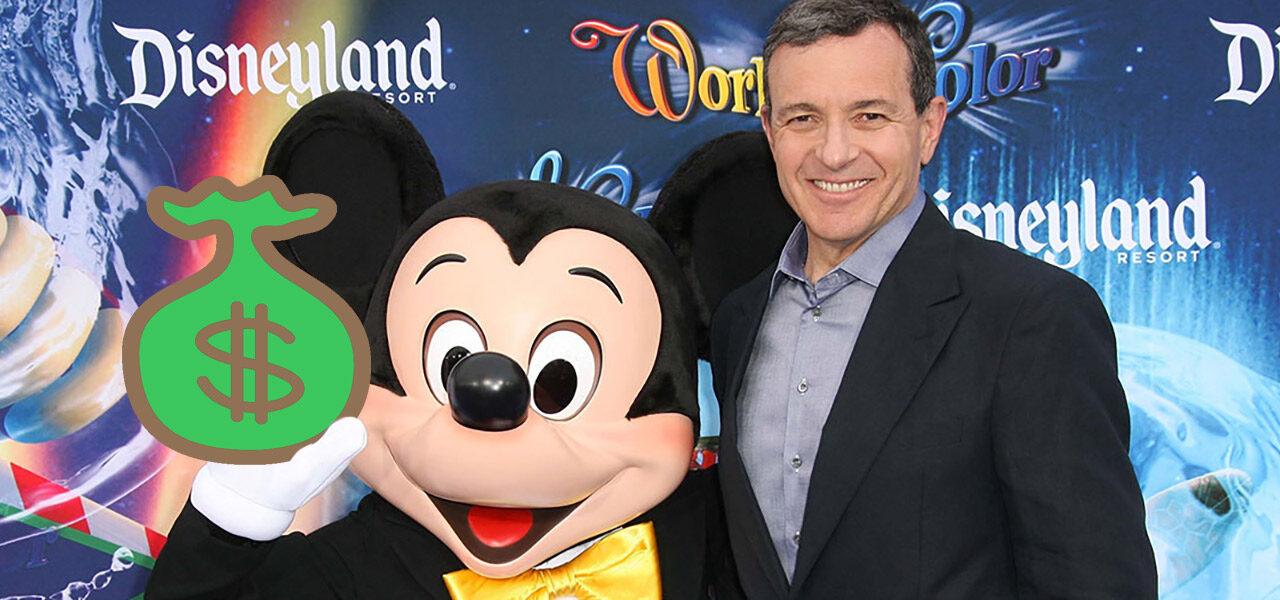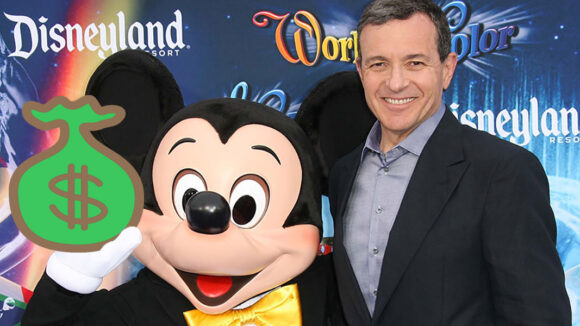

Disney Is Laying Off 7,000 Workers. Our New Video Essay Explains What CEO Bob Iger Is Doing.
The Walt Disney Company released its quarterly earnings report yesterday, and with it came the unpleasant news that the company is going to decrease its content spend growth and lay off around 7,000 workers worldwide.
Due to the significance of these layoffs as well as the recent return of Bob Iger as Disney’s CEO, we invited Colin Tedards of The Investor Channel to walk us through Disney’s latest quarterly earnings report (for reference, you can download the PDF here).
Watch the video below:
Colin’s in-depth analysis of Disney’s latest quarter shows us where the skeletons are buried – for example, the stagnating growth of Disney’s streaming business – while also providing useful financial advice on how to understand the numbers in a company’s quarterly reports, whether it be Disney’s or any other publicly-traded company.
A big reason we asked Colin to create this video is because of our belief that understanding the financial health of corporations is valuable knowledge for workers in animation. Industry workers have endured an abundance of layoffs, canceled projects, and studio mergers and consolidation over the last year. Having the ability to view corporations from the unsentimental point of view of an investor is a useful skill, and it can help animation workers to make pragmatic and informed decisions about their personal career path.
What is an Earnings Report?
A quarterly earnings report is a filing made by a publicly traded company every three months to report on its recent financial performance. Quarterly earnings reports include information regarding the company’s net income, earnings per share, earnings from continuing operations, and net sales. Stock analysts and investors use quarterly earnings reports as one way to gauge the financial health of the company and its prospects for the future.
After the reports come out, the companies’ executives often get on an investors’ conference call, sometimes revealing more information than is provided in the earnings report. In the case of yesterday’s Disney call for example, CEO Bob Iger announced the 7,000 job cuts, a fact that isn’t represented in the report. He also explained that Disney’s operations will be divided into three main segments: Disney Entertainment; ESPN; and Disney Parks, Experiences, and Products. We’ll have to wait until next quarter to see what that looks like in practice.
Tedards admits that these kinds of documents can be “kind of daunting to anyone new to investment, but once you understand them you understand that you’re skimming through 80-90% of them, and you’re just getting to the pieces that matter.” So fear not, we’re only going to focus on the sections that Tedards suggests are the most important.
Segment Revenues
Revenue is all the money coming into the company from all sources. For this report, Disney lumped its media and entertainment divisions (linear, streaming, ESPN) all into one. That will no longer be the case next quarter when Iger’s plan to split the company into thirds has been implemented. Disney’s revenues in the most recent quarter were down for traditional linear tv but up for direct-to-consumer (the company’s streaming platforms like Hulu and Disney+). Increased revenues don’t tell the whole story though, and things look grim when closer attention is paid to the next important section…
Operating Income
A fancy term for profit. Disney’s most recent report indicates that Disney Media and Entertainment lost $10 million over the quarter. That’s not great, but where things begin to look really bad is in the direct-to-consumer business. From $5.3 billion in streaming revenue, Disney actually lost $1 billion in just three months due to costs such as advertising, content spend, and streaming tech infrastructure.
Condensed Consolidated Statements of Income
A fancy way of saying profit and loss statement. According to Tedards, this is perhaps the most important part of the whole report and is buried down on page 14. “If you take anything from this video, it’s to learn how to read a profit and loss statement.” The terms top line and bottom line come from these types of reports, the top line being revenue and the bottom line being net income – the money the company took home at the end of the quarter. The bottom line is typically underlined twice, making it easy to find on most reports. There are several lines dedicated to revenue streams and outgoing costs, but the line that Tedards suggests paying attention to is the company’s “Operating Income,” labeled on Disney’s report as “Income from continuing operations before income taxes.” This is an indication of the money that a company makes operating its businesses. The better this number, the more healthy a company looks to investors.
Cash Flow Statement
“If you can understand a Cash Flow Statement, you are in the top 1% for financial literacy,” says Tedards. The good news here is that there are only two lines that an average investor needs to understand on a cash flow statement. They are “Net income from continuing operations” – the bottom line on the company’s financials; and “Cash used in operations – continuing operations” – money from the company’s cash on hand that was spent throughout the report. Again, a larger positive number is desirable here.
Other useful information.
- Anytime a number is shown in parentheses (), that represents a negative number.
- Always check the dates at the top of each section of the report. Sometimes it will show figures based on the same quarter of the previous year, other times it will show data from the most recent quarter.
- These filings always lead with good news, so don’t be fooled by the companies’ positive spin at the beginning of a report.
- In financial terms, Tedards argues a company’s number one obligation is to its stockholders. That’s why a company like Disney sees stock prices go up when layoffs are announced, and why Iger promised to reduce costs in his conference call. Seven thousand people who work for Disney are going to lose their livelihood, but Disney’s stock will undoubtedly go up.
- The projects that often draw a lot of media coverage, such as Disney’s theatrical film business, are often a non-factor in a company’s earnings reports. One big hit, like Avatar: The Way of Water, or one mega-flop like Strange World, ultimately makes little difference to Disney’s overall performance.

.png)